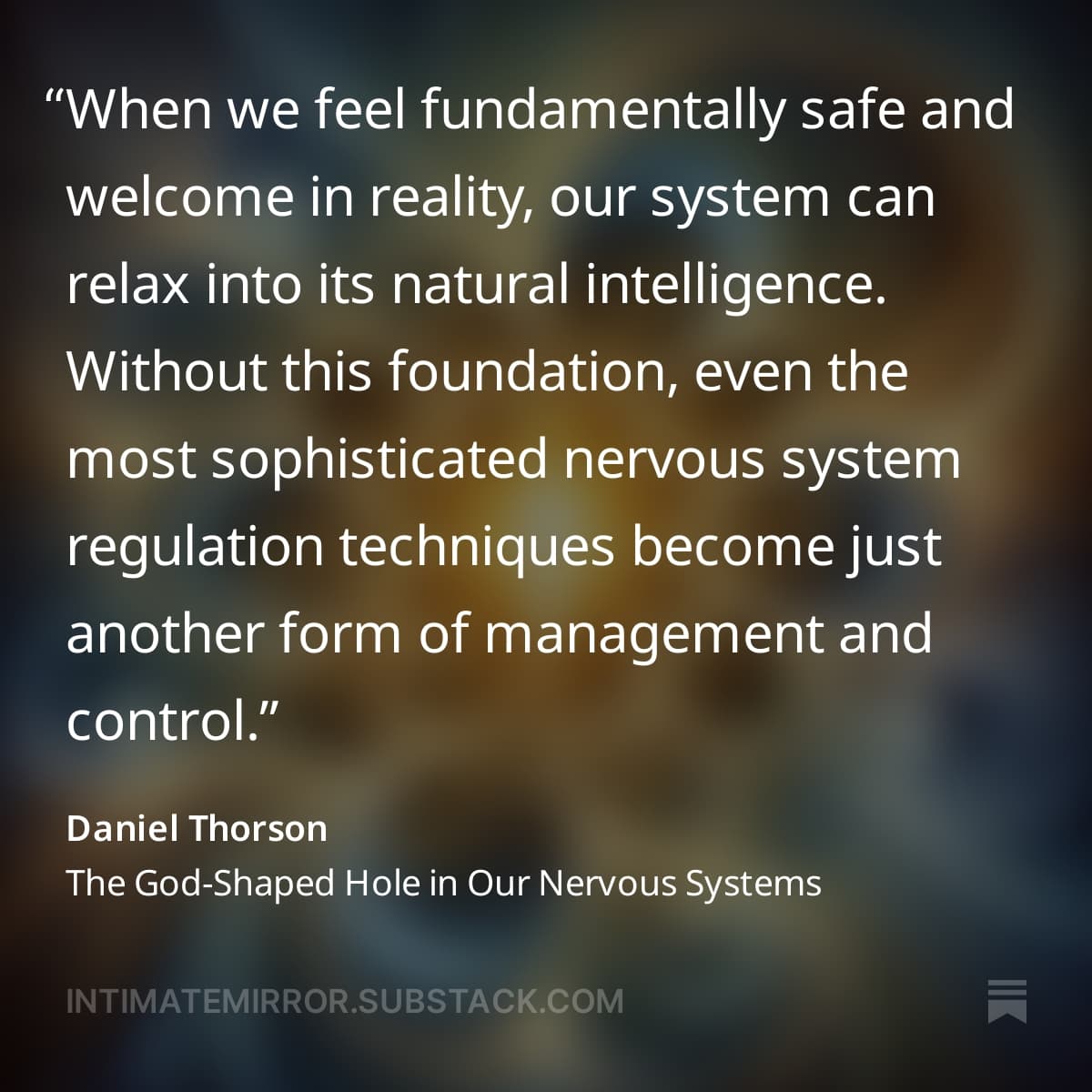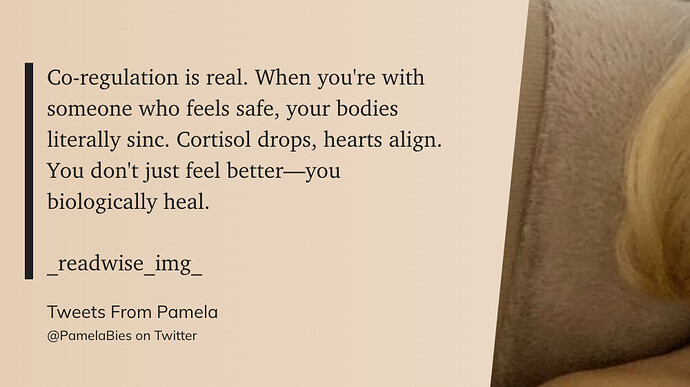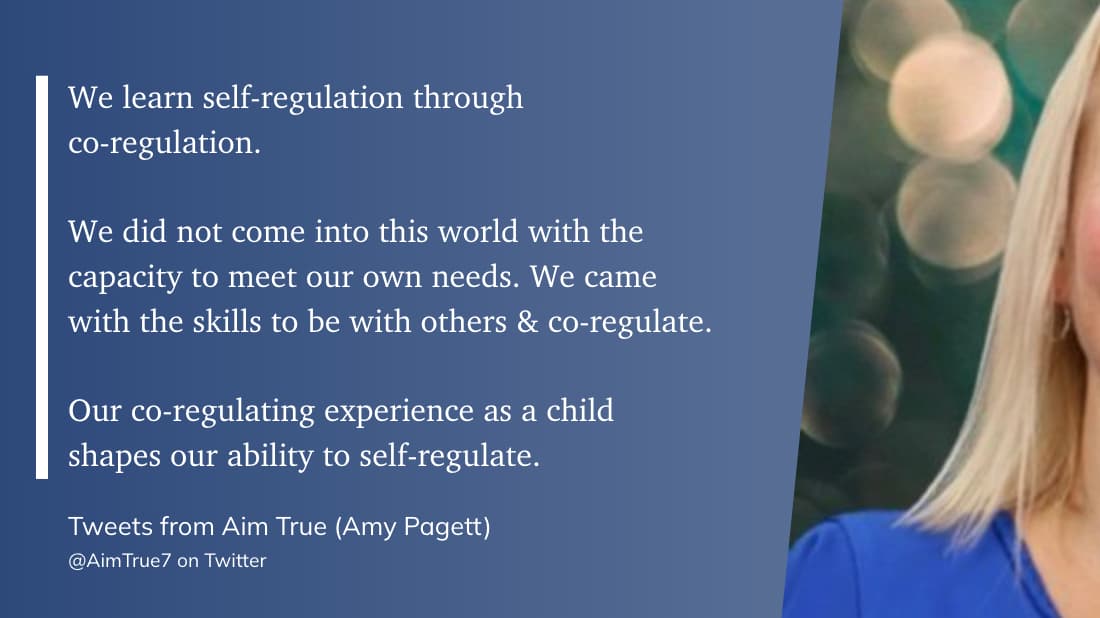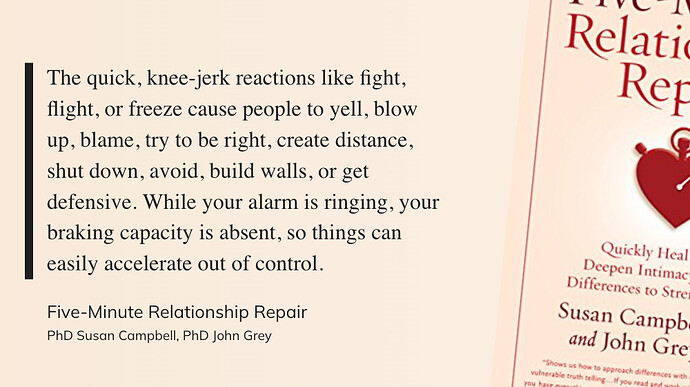"No one talks about the shame of reacting in ways that hurt others.
When survival mode hijacks our response, we can say things we don’t mean.
We can shut down when someone needs us.
We can lash out when all we wanted was connection.
And once everything quiets down?
We’re left with shame. Self-hatred.
The fear that we’re ‘the problem’.
But listen please: A dysregulated reaction does not make you unworthy.
It makes you human.
Shame wants you to believe you’re beyond repair.
But true accountability isn’t about drowning in self-hate.
It’s about understanding what happened so you can change the pattern."
— @All_Is_Balanced on X
For me this is where co-regulated people can understand: Ah, there’s dysregulation here! What is said/done I want to protect myself from but it represents how their Primitive Brain is coping with these big feelings and triggers. We’ll explore a deeper truth once we’re all co-regulated…
Co-regulation is real. When you’re with someone who feels safe, your bodies literally sinc. Cortisol drops, hearts align. You don’t just feel better—you biologically heal.
We learn self-regulation through co-regulation. We did not come into this world with the capacity to meet our own needs. We came with the skills to be with others & co-regulate. Our co-regulating experience as a child shapes our ability to self-regulate.
The quick, knee-jerk reactions like fight, flight, or freeze cause people to yell, blow up, blame, try to be right, create distance, shut down, avoid, build walls, or get defensive. While your alarm is ringing, your braking capacity is absent, so things can easily accelerate out of control. ~ Susan Campbell
Regulation before resolution.
We try to think our way through pain, plan our way out, boundary our way safe… while our nervous system is still lit up. When we’re dysregulated, everything gets framed as threat, urgency, or failure. Then even good tools feel like they “don’t work.”
When people actually feel the difference of “get present first, then choose,” things start to click. Simple, body-first moves:
-
Hand on heart, feet on the floor, a softer out-breath.
-
Name what’s true right now without fixing it.
-
One round of gentle tapping to lower the charge enough to have options.
From there, acceptance isn’t collapse, boundaries aren’t war, and tiny actions actually stick—because the body says yes.
If you try a 60–90 second regulate-first pause before any hard conversation or decision for a week, what do you notice?
Here are some questions that reliably point us to regulation before resolution:
-
Am I activated right now, or basically steady?
-
What sensations tell me my primitive brain is driving?
-
Do I actually need to decide this now, or can I take 60 seconds?
-
What would help my body feel 5% safer right now—breath, water, step outside?
-
Who/what can I co-regulate with for a minute—person, pet, tree, voice note?
-
Can I name one true thing without fixing it? (Part of me is scared… and I’m here.)
-
If I softened my jaw and shoulders, what shifts?
-
What’s the tiniest next yes from here?
As you explore these, what do you notice in your body—any loosening, resistance, a spot that wants attention?



